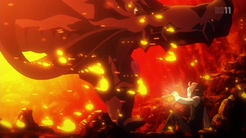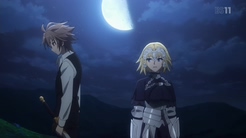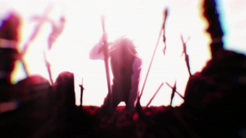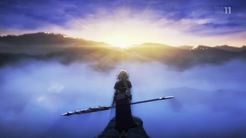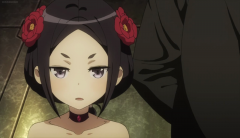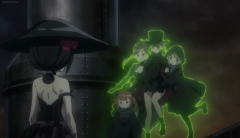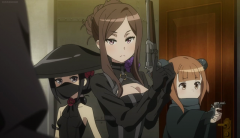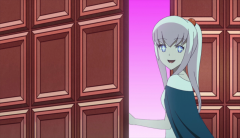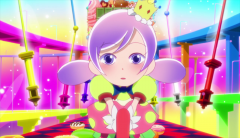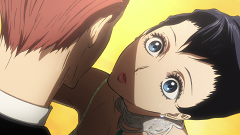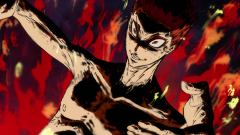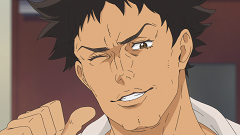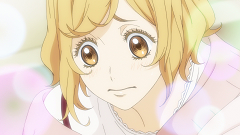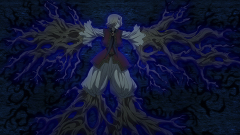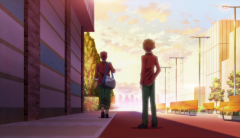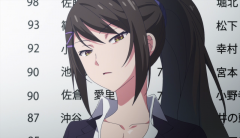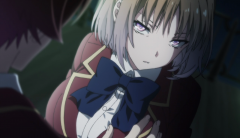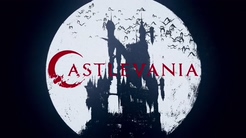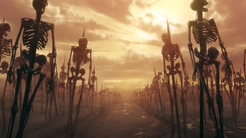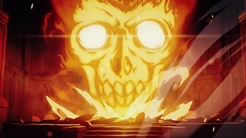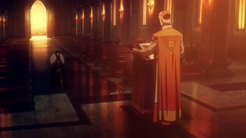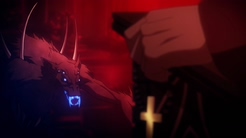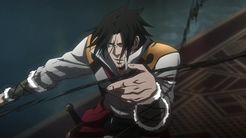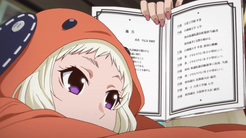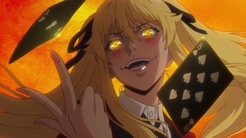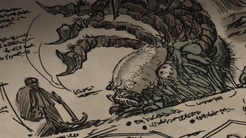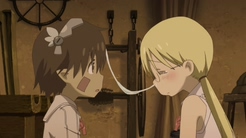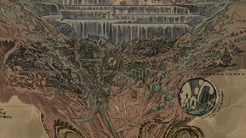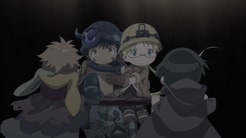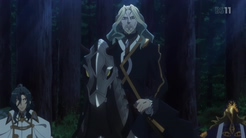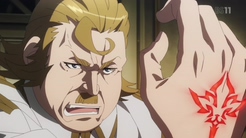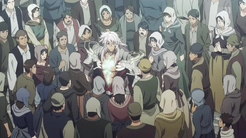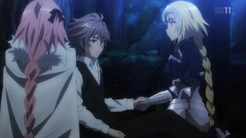Seeings as we are five episodes in and my joyous period of fanboyism has subsided I believe it is time to admit something. I don’t actually think this show is that good and I am questioning just why that is. I don’t believe my assessment of the source material was wrong as it was indeed a strong narrative there which had my full attention. However here, something is off. I can’t quite pin down what precisely it is but something is killing this story. My previous culprit to blame was the pacing but in this episode they thankfully slowed down. Perhaps the animation? No, while A-1 is far below the quality one could expect from a Ufotable production this isn’t a terrible looking show. Still not gone on the character designs but animation wise it’s fine. No, perhaps the fault lies in how it’s adapted as there are some questionable choices at work here. Take for example Lancer of Black, aka Vlad Tepes. I say most would be surprised to see his leniency in punishing Astolfo in this episode considering his legacy in the common eye as a bloodthirsty tyrant. But in the novel this wasn’t much of a surprise as it went into detail on just why Vlad has joined this battle and I personally though his motivation was a stroke of creative genius. I can’t really go into it at that point as it’s bound to be brought up sooner or later but I think this is the problem with rushing the beginnings of this story. In doing so a number of characters have been left with one dimensional characterisation. I wouldn’t blame a fan of fate animated works being disappointed in this as I too find it much more underwhelming than its book counterpart.
My current state of thinking could be just a temporary thought as this was a rather weak episode in comparison to the others. Mainly because the focus was on Ruler and the newly named Homunculus, Sieg. These two really do drag on and I think that instead of rushing the cool battles we were supposed to get last episode we could have rushed this instead. For this is remarkably dull watching these two utterly bland characters. Ruler I will give a pass as it more or less is her sticking to the character of Joan of Arc and the role of the holy maiden. Still it doesn’t make for great characterisation and at times I am missing the interpretation of Joan from Drifters. She’s isn’t completely boring as she has the standing above all the servants and is badass in her own right but I worry that the main reason this episode got more focus than the last is due to her being prime “waifu” material. But if there is something I just find dreadfully boring with no upside it’s this Sieg fellow. You can give Shirou a lot of grief over his survivor’s guilt and superhero complex but at least it made him interesting. Sieg on the other have is a dull emotionless empty character who basically needs to learn how to live and grow a personality. He’s self insert material and I dislike that he has a role in this at all. He’s dangerously close to becoming the usual light novel protagonist and I even see signs of girls falling for him for no reason and with Siegfried’s heart he’s bound to get free power ups to show how “cool” he is. This kid is a chekhov’s gun that’s just ready to kill any potential this story has.
We get a small glimpse of Assassin of black and her master this week and yet again we have another servant who has been shafted by the anime. Assassin of Black actually has a short story detailing her summoning and the main book did dedicate time to showing just what went down. At the moment they are basically the Ryou and Caster duo in being chaotic evil. Now as it’s revealed in this show our Assassin here is Jack the Ripper and out of all the strange servants on Apocrypha this one is the one I have the hardest time suspending my sense of disbelief with. Personality wise I actually find it interesting to interpret Jack the Ripper as a child demon born from discarded babies from the positives of London. Her relationship with her master is equally interesting as they have a mother daughter relationship instead of a master and servant one. It was made a point in the books that when Jack calls her master she simultaneously says Master in a way that can also be interpreted as mother. But despite this concept being very intriguing and one I can get on board I cannot for the life of me take her remotely seriously based on her design.
I mean, Jack the Ripper, represented by a Lolita in dominatrix gear. It’s just really really dumb. There is in fact another interpretation of Jack the Ripper in the Fate Universe and that comes from Fate/Strange Fake which was written by Narita Ryohgo of Baccano/Durarara fame. In there Jack was shown as a shapeless being who could assume many forms as the real Jack the Ripper was never caught so his legacy is that of an anonymous serial killer. In the particularly quirky style of character writing that Narita has this servant was summoned as a berserker but due to Jack the Ripper already being insane, placing mad enchantment on him only ended up turning him sane. Both interpretations have there great points but in Fate/Apocrypha case I wish that Jack’s design wasn’t so obviously geared towards fanservice. So with the final moments of this episode we have pretty much established that the Red masters won’t be playing much of a role in this war, if the opening and character designs of the them didn’t tip you off to that already.

